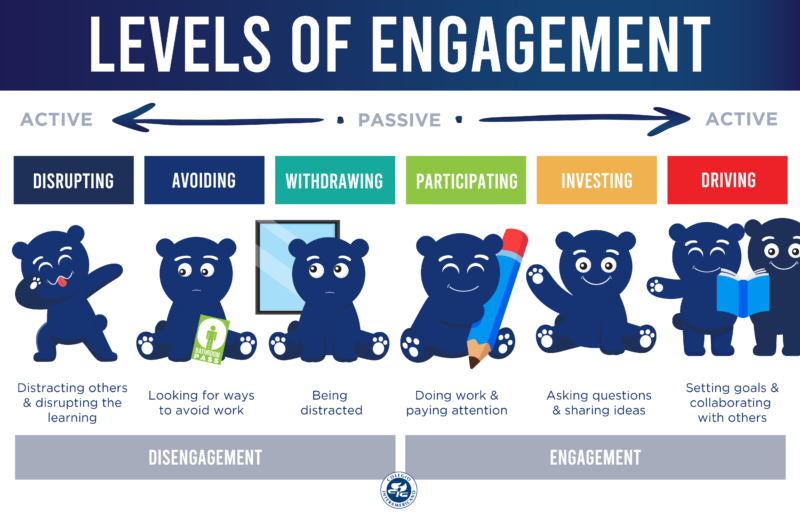
I don’t know about you, but it feels to me like ever since the Pandemic hit, kids are having bigger struggles with self-regulation. Every year it seems like there has been an increase in the number of students that have a harder time controlling their feelings, impulses, and attention. I’ve wondered about the reasons behind this phenomenon, but right now I’m more interested in helping students self-regulate more successfully so that they can learn better.
Last October, at the Tri-Association conference in Colombia, I learned about levels of engagement, and it made me think that teaching students about the levels of engagement is a way to empower them so that they can self-regulate more successfully.
In general terms, there are six different levels of engagement that can be active or passive, where learners can be engaged or disengaged. It sounds complicated, but it’s just a matter of understanding the differences between all of them. It took us a few minutes to explain what they are and a couple of days for learners to get the gist of it.
When starting a lesson, I ask them to find their level of engagement, using a visual cue we have in our classroom.

Watch this video that shows students explaining how to determine at which level of engagement they are. Then I ask them where they want to be and what choices they need to make to take them where they want to be. I help them set a goal by letting them know what the lesson’s targets are.
In doing this, it changes the perspective from behavior management by the teacher to guiding students into making choices that can help them drive their learning, empowering them while doing so. The beauty behind this is that they can move from one level to the next… All they have to do is notice where they are (here’s where we can lend them our prefrontal lobes and help them), and then make dierent decisions.
I have seen how using levels of engagement helps students learn about the connection between self-regulation and where they want their learning to go, and, therefore, how to be in charge of it.
Fisher, D., Frey, N., Ortega, S., Hattie, J. (2023). Teaching Students to Drive Their Learning: A Playbook on Engagement and Self-Regulation Grades K-12. Corwin Press, Inc.
Fisher, D., Frey, N., Hattie, J. (2021). The Distance Learning Playbook Grades K-12: Teaching for Engagement and Impact in Any Setting. Corwin Press, Inc.